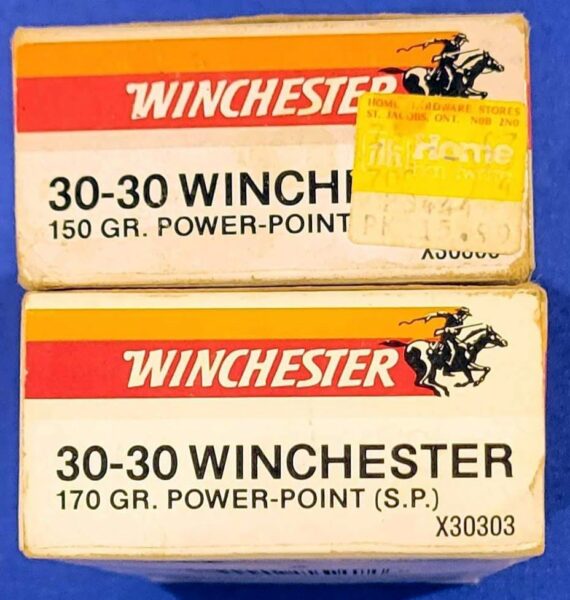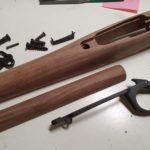30-30 Winchester used to be the most popular deer cartridge in the earlier part of the century but its popularity has decreased as we’ve been getting more powerful cartridges in more accurate platforms. But if you’ve still got a Marlin 336 or Winchester 94 in 30-30, you might be wondering whether 150 or 170 grain is better. Keep in mind that these 2 bullet weights are not drastically different so we’re not going to see drastic differences. I’m going to be using factory data for store-bought ammo on this.
Another quick note: while 30-30 used to be cheaper than many other centerfire rounds, it’s lost popularity and is now about the same or slightly more expensive than more common rounds. It’s around $30-50 CAD per box of 20, depending if it’s on sale or not.

Most 150 grain bullets will be around 2390 fps, with a BC of .218 (Federal Power-Shok specs)
Most 170 grain bullets will be around 2200 fps, with a BC of .254 (Federal Power-Shok specs)

Metric 1: Ballistic profile
Ballistic profiles suck for both of these but given that the 170 is slower at the muzzle, it’s going to have more drop.
150 grain, zeroed for 100 yards, will drop 7.2″ at 200.
170 grain, zeroed for 100 yards, will drop 8.4″ at 200.
Small win for the 150 grain bullet here.
Metric 2: Energy
At the muzzle, the 150 grain is producing more energy: 1902 ft-lbs vs 1827 on the 170 grain bullet.
At 100 yards, the 150 is producing 1358 ft-lbs vs 1354 on the 170
At 200 yards, the 150 is producing 947 ft-lbs vs 990 on the 170
So the 150 starts with more energy, they’re practically the same at 100, and the 170 ends off with more at 200.
Metric 3: Impact velocity
K, I know this is a weird metric but hear me out for a second: bullets are made to expand with a certain amount of velocity on impact. If you impact too fast, they fragment and get low penetration, go too slow and the bullet will fail to expand. As an example, the TTSX 308 bullets need to impact at faster than 1800 fps or they’ll just make a pencil hole through and fail to expand.
At the muzzle, the 150 grain is moving at: 2390 fps vs 2200 on the 170 grain bullet.
At 100 yards, the 150 is producing 2019 fps vs 1894 on the 170
At 200 yards, the 150 is producing 1686 fps vs 1619 on the 170
Metric 4: Penetration
Heavier, slower bullets will penetrate more. This is a win for the 170 BUT, if the 150 penetrates all the way through your game animal at the distances you’re shooting. . .you’re not making use of the extra penetration the 170 would get you. It’s just energy being transferred to the hill behind the deer instead of into the deer. For bigger game animals like Elk/Moose, the 170 will be the better choice.

And I think that just about sums it up. For deer, the 150 grain version will be slightly flatter, will have more power at close range, and will be more devastating to the vitals.
For Elk/Moose, you desperately need more penetration in case you hit a rib or front shoulder, so the 170 grain bullet will be the choice.

Or just cheat with Hornady LeverRevolution
Traditional 30-30 bullets in 150 and 170 grain have a downside: terrible ballistic coefficients that make them awful at long range. The Hornady LeverRevolution uses a 140 or 160 grain bullet with a flexible rubber tip on it. The 160 grain version achieves a far better .330 ballistic coefficient but is still safe for tube magazines. It pulls:
Muzzle: 2400 fps and 2046 ft-lbs
100 yards: 2151 fps and 1643 ft-lbs
200 yards: 1917 fps and 1306 ft-lbs and only 6.1″ of drop
If this stuff shoots accurately in your 30-30 and you may need to take shots at further than 100 yards, I’d use it because it’s ballistically FAR superior to traditional factory ammo.






